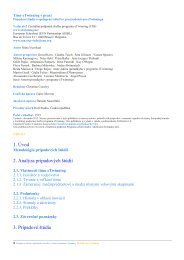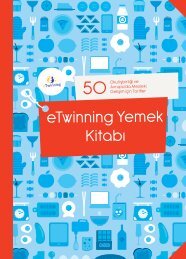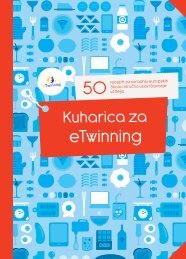itec - European Schoolnet
itec - European Schoolnet
itec - European Schoolnet
Create successful ePaper yourself
Turn your PDF publications into a flip-book with our unique Google optimized e-Paper software.
iTEC Project<br />
Title: ITEC-D10_2_V1-1 041102012.Docx<br />
<br />
<br />
<br />
Number of criteria<br />
Rating according to the i-th criterion<br />
Utility function for the i-th criterion<br />
Taking as a foundation existing theories and research in this field, (Adomavicius, Manouselis, &<br />
Kwon, 2011), (Lakiotaki, Matsatsinis, & Tsoukià ands, 2011), (Liu, Mehandjiev, & Xu, 2011)<br />
propose to treat the recommendation problem as a multicriteria decision problem according to the<br />
methodology in Roy (1996) to model this class of problems. According to this methodology, we can<br />
identify four analysis steps or levels when analysing a decision-making problem:<br />
• Level 1. Object of Decision. In this first stage we define the purpose of the decision<br />
system to be developed among those below:<br />
o Choice: to select the most appropriate elements for a given user.<br />
o Sorting: to classify all the elements available into categories, according to their<br />
appropriateness for a given user.<br />
o Ranking: to sort the elements according to their appropriateness for a given user, to<br />
provide a sorted list, from best to worst alternative.<br />
o Description: to describe the appropriateness of an element according to the rating<br />
criteria.<br />
• Level 2. Family of Criteria. The second stage is devoted to identifying the criteria to be<br />
used. A criterion is any artefact or factor that enables the comparison of different<br />
alternatives according to a given point of view (Roy, 1996). More precisely, we can formally<br />
define a criterion as a real-valued, non-decreasing function, defined for the set of<br />
alternatives , to compare the apropriateness of these alternatives:<br />
where:<br />
(3)<br />
<br />
<br />
<br />
i-th rating criterion scale<br />
Rating of according to the i-th criterion<br />
Rating vector of according to the criteria<br />
Single-criterion approximations have to take into account a single factor to capture all<br />
possible relevance aspects. On the other side, multicriteria approximations consider<br />
multiple factors to represent different points of view. The inherent complexity of multicriteria<br />
systems requires the identification of a consistent family of criteria (Roy,<br />
1996):<br />
Let be the function expressing the preferences of a given user to decide between two<br />
alternatives and according to criterion . A family of criteria is consistent if it satisfies the<br />
properties below:<br />
o Monotonic: if and only if, for each pair of alternatives , for<br />
criterion , and for all criteria , then alternative is preferred to<br />
<br />
Page 39/96

















